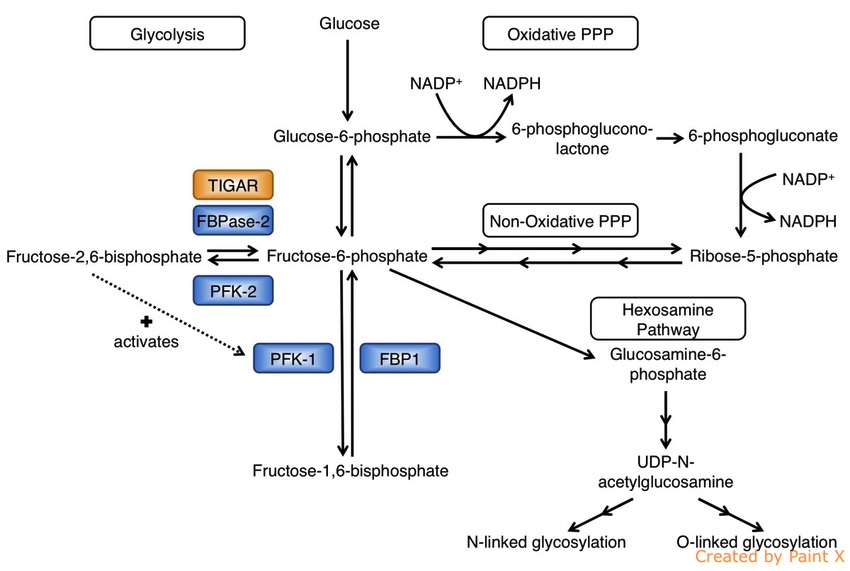
The p53 protein is tumor suppressor that is involved in apoptosis, cell-cycle arrest and DNA damage repair. It is a stress-induced transcription factor regulating the expression of vast variety of genes. TIGAR is the recently identified novel target of p53. It functions to lower Fructose-2,6-bisphosphate levels in cells by down-regulating glycolysis and promoting Pentose Phosphate Pathway (PPP). TIGAR activity can protect cells from apoptosis, can induce DNA damage response and reduce the oxidative stress in cell. TIGAR mechanism of action is summarized in the diagram below.
 |
Overall Structure of TIGAR | Page
1 |
| Active Site Comparison between Wild type and H11A mutant TIGAR | Page
2 |
|
| Structural Comparison of Dimers of Wild type and H11A mutant TIGAR | Page 3 | |
| Structural Comparison between TIGAR and PhoE Phosphatase | Page 4 | |
| Structural Comparison between TIGAR and FBPase-2 | Page 5 |
To study structural and biochemical properties of this enzyme, in this paper they purified TIGAR from zebrafish (Danio rerio). Then the crystal structure was obtained after limited proteolysis for both tryptic core domain and full-length protein . The resolution of crystal structure they obtained is 2.0 Å and it contains 257 residues. The electron density was well defined for molecules with the exception of residues 149-159 in the loop region between α5 and strand β4 in the molecule and these regions were not included in the model. To study substrate bound structure, they also generated H11A site-directed mutant form of zebrafish TIGAR and another crystal structure for this was obtained with 2.1 Å resolution.